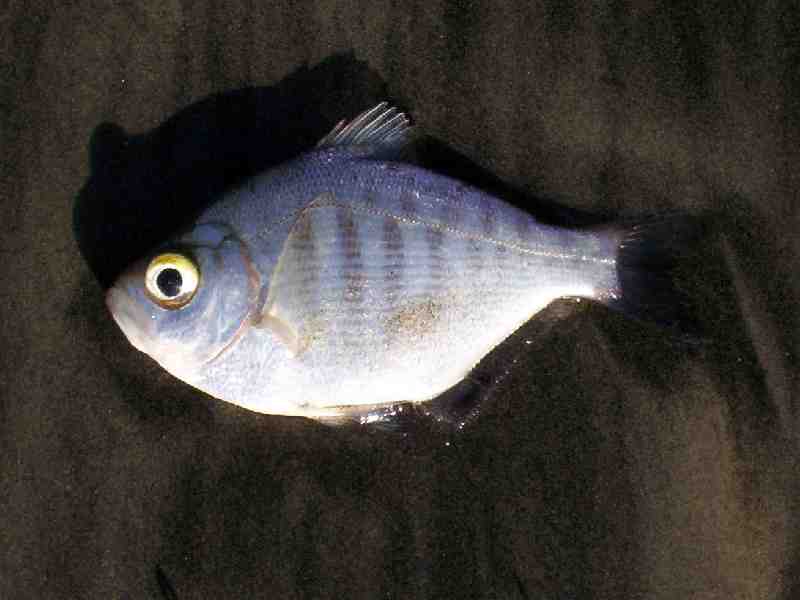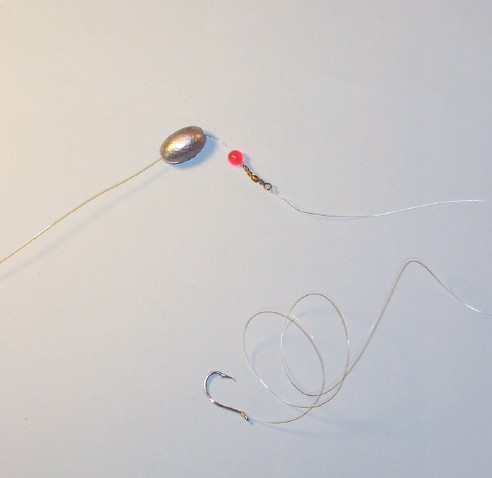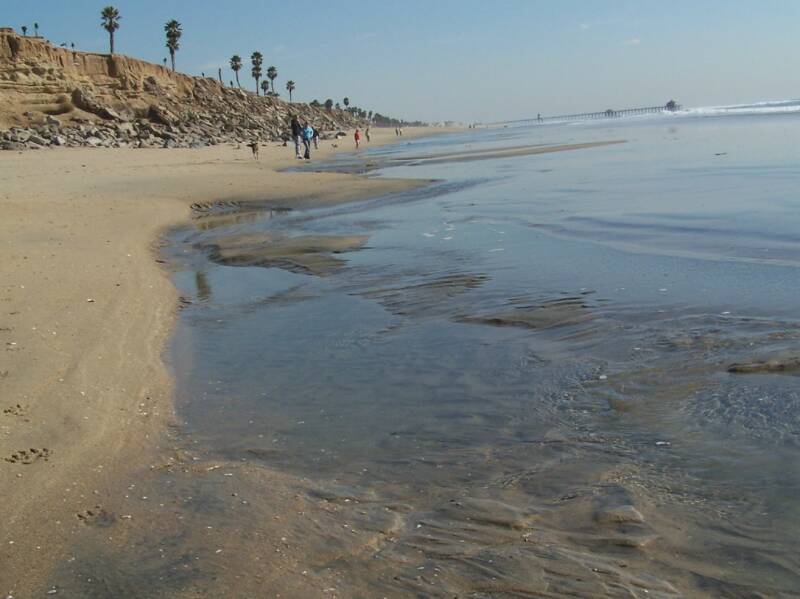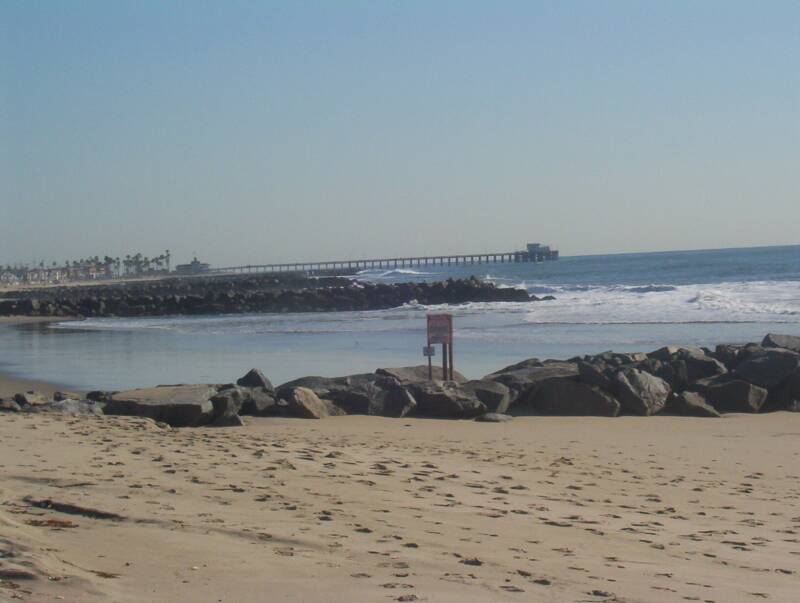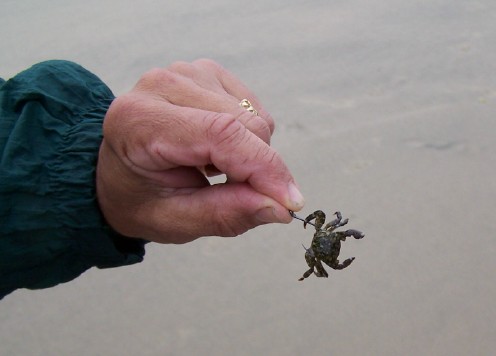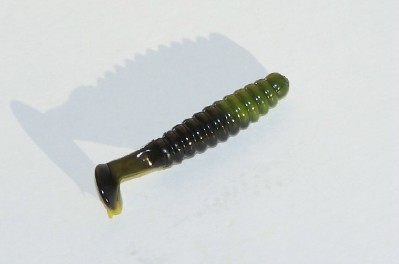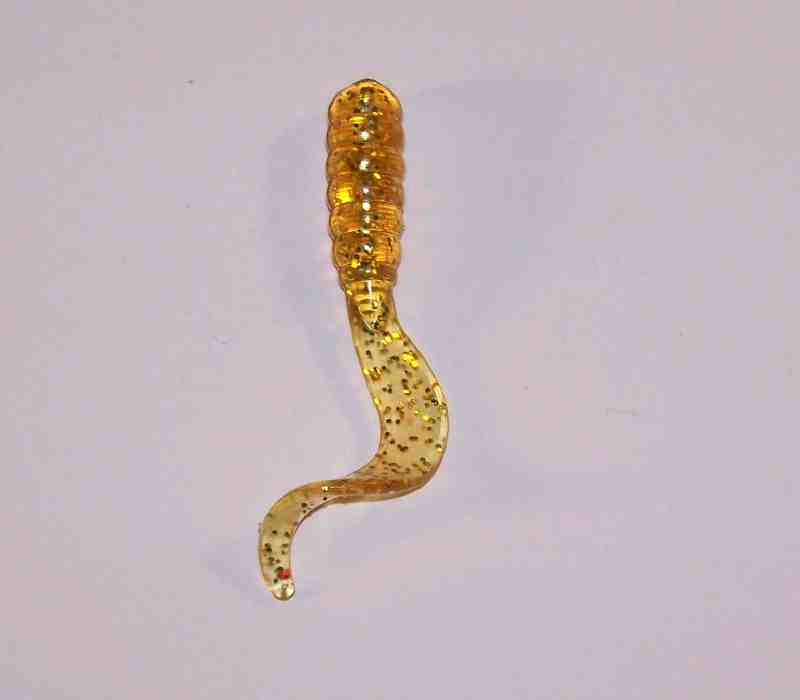Light-Line Tips For Winter Fishing
By Bill Varney Jr.
A long stretch of sandy beach rolls out like ribbon from beneath your feet. You can smell the crisp fall air and hear the warm clear water as it slaps the beach. Fall is here with winter on the way and while most offshore fishing has slowed down some of our coasts best surf fishing is about to begin.Fall and winter months bring many opportunities to the surf fisherman. With cooling water temperatures the summer corbina begin their annual migration away from the beach. Sand crabs dig themselves deeper into the sand and disappear until spring. Yet, with all that said, the best surf fishing is just beginning.
The fall months of October through December offer great opportunities to catch trophy size perch, walleye and yellow fin croaker. Local beaches from San Diego to Crescent City offer anglers the chance to cash in on the season’s first perch spawn.
With a few quick tips, the right equipment and a little luck you won’t need to wait out the winter to pull on a fish. With light crowds and beautiful days ahead, there’s no time better than now to head on down to the beach.
Long gone are the days of big sinkers, long rods and heavy line. Throw away your sand spike, now is the time to go ultra-light. Light-line surf fishing has become popular in the last several years and it’s by far one of the best and most exciting ways to fish the surf.
Start with a six to eight foot light action rod that handles two through ten-pound test. Match the rod with a small spinning reel, one with a capacity for 150 yards of four-pound monofilament. If this sounds like the trout rod up in the rafters of your garage, you’re probably right!
For terminal tackle you’ll need egg sinkers in 1/4th to 1 ounce, size 8-12 swivels, small red or clear beads and hooks. Depending on whether you’re using grubs or worms for bait you’ll need a good assortment of size four and size six worm and split shot hooks.
The Carolina rig is the most common surf setup and consists of nothing more than a sinker, bead, swivel, leader and hook.
A long stretch of sandy beach rolls out like ribbon from beneath your feet. You can smell the crisp fall air and hear the warm clear water as it slaps the beach. Fall is here with winter on the way and while most offshore fishing has slowed down some of our coasts best surf fishing is about to begin.
Fall and winter months bring many opportunities to the surf fisherman. With cooling water temperatures the summer corbina begin their annual migration away from the beach. Sand crabs dig themselves deeper into the sand and disappear until spring. Yet, with all that said, the best surf fishing is just beginning.
The fall months of October through December offer great opportunities to catch trophy size perch, walleye and yellow fin croaker. Local beaches from San Diego to Crescent City offer anglers the chance to cash in on the season’s first perch spawn.
With a few quick tips, the right equipment and a little luck you won’t need to wait out the winter to pull on a fish. With light crowds and beautiful days ahead, there’s no time better than now to head on down to the beach.
Long gone are the days of big sinkers, long rods and heavy line. Throw away your sand spike, now is the time to go ultra-light. Light-line surf fishing has become popular in the last several years and it’s by far one of the best and most exciting ways to fish the surf.
Start with a six to eight foot light action rod that handles two through ten-pound test. Match the rod with a small spinning reel, one with a capacity for 150 yards of four-pound monofilament. If this sounds like the trout rod up in the rafters of your garage, you’re probably right!
For terminal tackle you’ll need egg sinkers in 1/4th to 1 ounce, size 8-12 swivels, small red or clear beads and hooks. Depending on whether you’re using grubs or worms for bait you’ll need a good assortment of size four and size six worm and split shot hooks.
The Carolina rig is the most common surf setup and consists of nothing more than a sinker, bead, swivel, leader and hook.
Start by tying several 18” leaders made of 4lb mono or 6lb fluorocarbon. Tie a swivel to one end and a hook to the other. Make sure you tie both worm and split shot hook leaders so you have one for each type of bait.
To keep your leaders from tangling just cut a piece of 3×5 inch card board. Cut a slit on one side every inch. Place a hook into one edge, wrap the line around the cardboard and then pull the swivel and line through the slit on the other edge to hold it into place.
Once your leaders are ready it’s time to rig your rod. Slide a 1/2ounce egg sinker onto your main line. Now add a bead. Finally, tie on the leader you’ve made and you’re ready to fish.
Once you make it down to the beach pick a high spot above the water’s edge where you can see the lay of the land. If you’re on a sandy beach look for points of sand and bays where sand has been washed away. Between these points you’ll find inner and outer long shore troughs. These troughs form from the pounding surf at high and low tides.
The inner trough may be as close as ten feet and as far as sixty feet from the beach. Fish school in this area because it provides shelter, current and churning food. Troughs are easiest to find at low tide. Take an extra trip to the beach at low tide so that when high tide comes you’ll know exactly were the fish are.
The inshore trough is formed by waves and is the home to most surf fish
Other forms of “structure” at the beach include rip tides and wave edges. Rip tides are offshore moving currents generated by swells approaching the coast nearly head on. These currents carry extra water that’s been pushed ashore back offshore and create an eddy circulation that provides an inviting home for surf fish. Triangle edges created by breaking waves will also tip you off to where the water is deeper.
On beaches that have not been dredged (e.g. San Diego and Santa Barbara) additional structure includes rocks clusters and eel grass. These are also good edges to fish around because they attract fish for food and shelter.
Rock walls and jetties also offer some great surf fishing. Winter swells force sand to recede from beaches and expose rock structure where fish hide. Fan cast and retrieve you bait slowly along the edges of this structure. Also, look for small eddies that form on the leeward side of jetties. Characterized by foam and off color water, these eddies are caused by swells and also create a great place for fish to feed.
Rock walls and jetties make great places to fish around
When it comes to bait one axiom always comes to mind: Look for what occurs naturally around the area you are fishing. What’s between the rocks or in the sand beneath you feet? Look around and see what you think the fish have for food. If you see mussels on the rocks or crabs in the sand you can be sure that’s what their eating.
Common baits you’ll find at the beach include sand and sidewinder crabs. Sand crabs will be scarce at this time of year but can be found when digging near structure such as rocks and pier pilings. Frozen sand crabs, caught and stored in the summer months, also make a great winter bait. Add a bit of taco sauce to the crabs as they thaw and perch will find them irresistible!
Sidewinder crabs and rock mussel never take a day off and can always be found on your local rock jetty. Sidewinders, the size of a dime, make the best bait. Try not to feel too discouraged, catching sidewinder crabs can be a bit tricky and takes practice and patience.
Sidewinder rock crabs make great bait for perch and croaker
Once you’ve caught a sidewinder, place the hook through the rear leg socket and out the opposite side. Mussel should be wrapped around the hook using the rubbery lip membrane to hold it in place. Try collecting both mussel and crabs at low tide. Some of the largest perch and yellow fin croaker have been caught on these baits.
Year round, blood, lug and artificial worms work great in the surf. When hooking worms, thread the worm onto your hook and pull it up your line. Puncture the hook through their side and leave a two-inch “tail” below the hook. By using this method you can slide more worm down below the hook after each fish and continue to use it for bait.
Swimtail Grub
Curly Grub
Plastic grubs and artificial baits such as spoons and flies are very effective and easy to use in the surf. Grubs come in two common shapes: Stump tail and curly tail. Both work well when used with the Carolina Rig. Use a shorter leader and heavier sinker in large surf and a smaller combination when the surf is small.
Some of Southern California’s best surf fishing comes in the winter months. So break out your ultra-light gear, jump in the car, and head on down to the beach. It’s a quick and inexpensive way to pull on fish when the dark clouds of winter are still overhead.
To find more information on surf fishing, including tackle tips, beach condition cameras and fish reports check out these great websites:
www.allcoastsportfishing.com ,
www.scsurffishing.com and my site: www.fishthesurf.com
